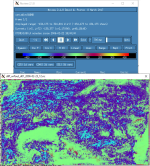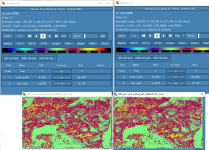Hi all,
I noticed that I get considerably lower SWDNB (and thus T2) values with WRF4.3 than with WRF4.2, keeping all other settings and ICBC data identical.
See a difference map for SWDNB below:

This seems to be rather systematic than just some random noisy difference pattern that would be expected from a version change. Do you have any insight into the physical processes at play here?
Thank you and best regards,
Akos
I noticed that I get considerably lower SWDNB (and thus T2) values with WRF4.3 than with WRF4.2, keeping all other settings and ICBC data identical.
See a difference map for SWDNB below:

This seems to be rather systematic than just some random noisy difference pattern that would be expected from a version change. Do you have any insight into the physical processes at play here?
Thank you and best regards,
Akos

